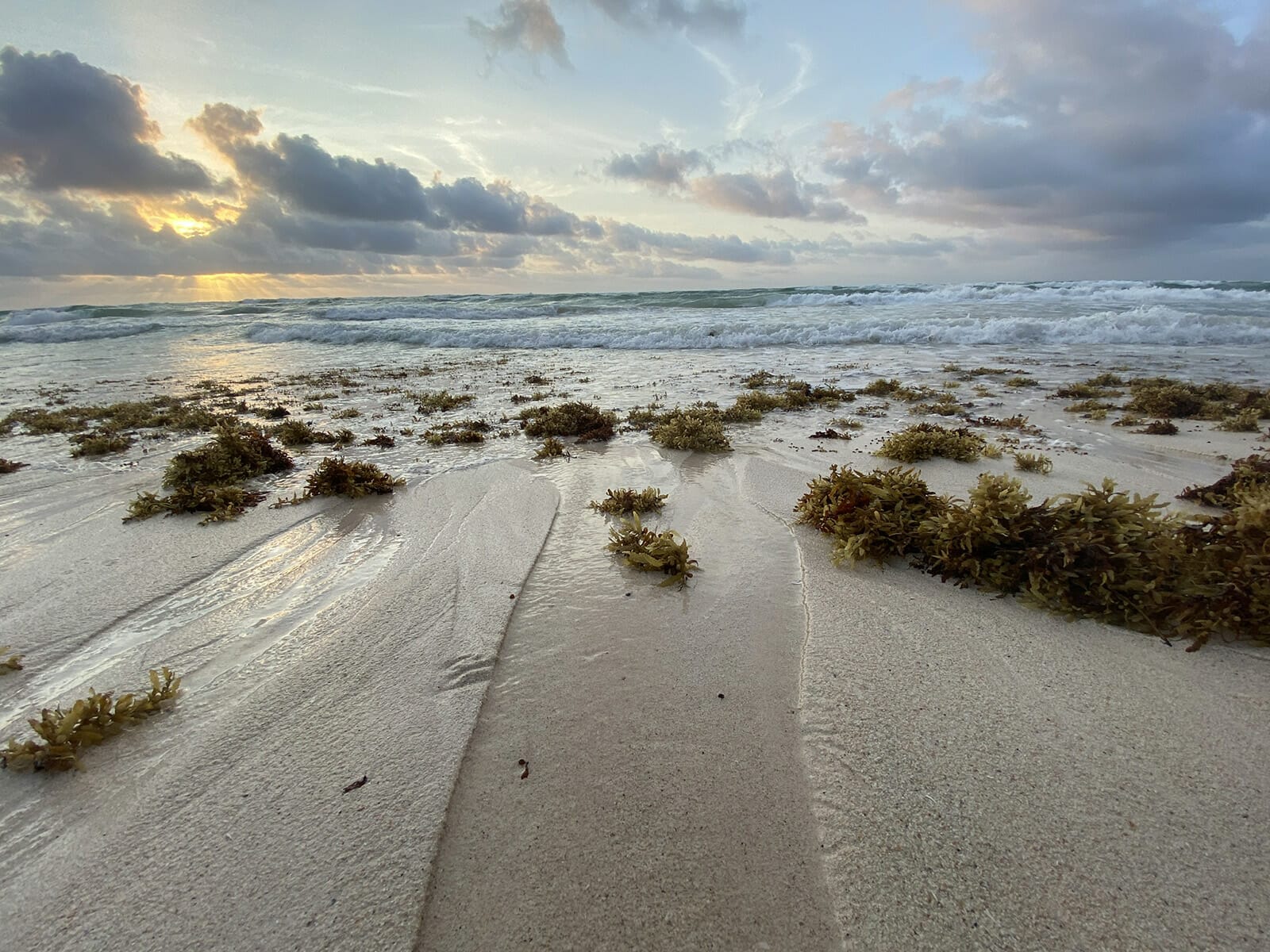Tulum, Mexico is a heavenly destination. Its endless miles of white sandy beaches and the unforgettable turquoise/emerald tones of the ocean and quaint Tulum Beach resorts.
But in the last few years, during the hottest months (from May to September), the Caribbean has been hit by waves of sargassum, mainly due to climate change and the increasing water temperatures.
Here you can find updated information on the sargassum status in Quintana Roo
A large amount of seaweed grows between the cost of Africa and Brazil; this area has been named the “Great Atlantic Sargassum Belt” and ocean currents end up bringing most of the sargassum towards Mexico and the Caribbean islands.
The local government, along with Tulum hotel owners and groups of volunteers, collaborate every year in order keep Tulum beaches clean. As of September of 2022 the Mexican government aligned with the Navy, installed a new preventive measure: a sargassum barrier of 1.49 miles in front of Tulum’s National Park and beaches. This barrier captures the majority of sargassum that comes floating in the water and is collected in boats before it has the opportunity to arrive to the shore.
The arrival of seaweed is totally unpredictable;beaches may be impeccable one day and sargassum may appear overnight. The Beach Tulum hotel has assigned staff in charge of keeping its beach clean; they do a silent and consistent job before sunrise, to make sure that guests can enjoy the beach as much as possible.
Sometimes the amount of seaweed is greater than any human effort, and since we cannot change nature, what we can do is a change of plans. You can still enjoy the beach and the sun, or your private plunge pool or hotel pool, maybe not the ocean, but there are plenty of things to do in Tulum if this happens during your vacation.
Cenotes: One of a kind natural sinkholes where you can snorkel, dive (certification needed) or just swim in its cool and pristine waters, surrounded by jungle and amazing endemic flora and fauna. Cenotes were sacred to the mayan culture, a place for rituals and ceremonies as well as the only source of fresh water in the peninsula.
Archaeological sites: Amazing ancient mayan structures, remains of prolific cities, ceremonial sites and commercial hubs. You can visit the archaeological site of Tulum and witness the magnificence of mayan architecture built right on a cliff facing the turquoise ocean. You can also visit Coba, the tallest pyramid in the area surrounded by smaller structures and walk or bike through open paths among the lush jungle, or Muyil with a smaller main pyramid and explore the natural waterways that were part of the mayan commercial routes along beautiful and intricate mangroves.
Yucatan: Yucatan is the neighboring state of Quintana Roo, it’s so close that you can plan a day trip to visit its main attractions. In only a 2 hour drive you can be in a totally different scenario: a 500 year old colonial town called Valladolid, with churches, central park with food vendors & local handcrafts, ancient buildings, convents and delicious Yucatecan restaurants. An extra hour drive on the highway will lead you to Chichen Itza, one of the new seven architectural wonders of the World.
You can also enjoy shopping on the Hotel strip in Tulum or go all the way downtown for a more local experience or even drive north to Playa del Carmen for the day. If you want to stay at the hotel and relax, enjoying a day at the Spa is always a great choice or taking one of the complimentary bikes at The Beach Tulum hotel and explore the main road, boutiques and restaurants, in a genuine Tulum style.






